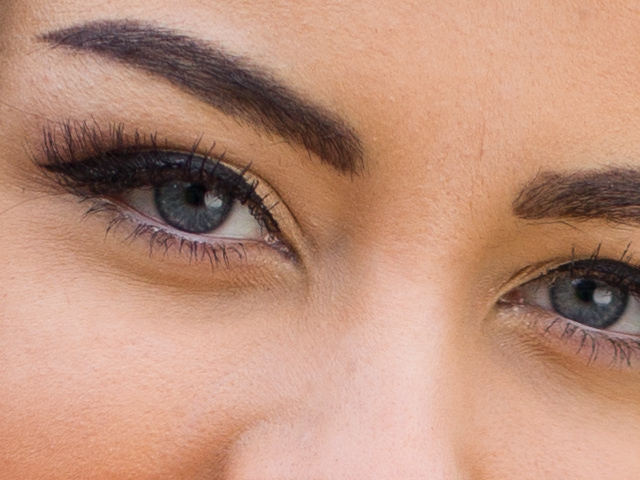| Article Index |
|---|
| Most Adorable 50s - Zeiss Otus & Sonnar, Leica Noctilux & Summilux, SLR Magic HyperPrime |
| Chart Test |
| Conclusion & Finale |
| All Pages |
Some time ago, we already compared a large selection of more or less adorable 50mm lenses on an APS-C crop camera (NEX-7) here. Now it's time for a sequel where we squeeze out the currently most adored 50s attaching them to the 36 MP full frame Sony A7R.
The candidates this time were (from left to right, the Leica M bodies this time only acted as lens cap ;-)):
- Leica Summilux 50mm f/1.4 ASPH
- Zeiss FE Sonnar T* 55mm f/1.8
- Zeiss Otus Apo Distagon T* 55mm f/1.4
- SLR Magic HyperPrime CINE 50mm T0.95
- Leica Noctilux 50mm f/0.95 ASPH
As far as I can remember, 50mm lenses always were a compromise and optimized for a certain purpose. So you had to decide between large aperture (typically f/1.4) portrait lenses designed for available light and optimized to isolate a subject in a range of 1 to 3 m from its environment with a smooth background blur or for a landscape lens that is perfectly sharp all over the frame at f/5.6 - f/8 on large distances. But 2013 Zeiss stepped in with a "no compromises" lens demonstrating that it is possible to build a lens covering all purposes with maximum image quality, the "Otus 1.4/55".
Only the Zeiss FE Sonnar T* 1.8/55 is a native lens that was launched by Sony together with their new series of full frame cameras, the A7 and A7R. All other lenses had to be adapted using a Leica M to E-mount adapter or (in case of the Otus in ZF.2 mount version) a F-mount to E-mount adapter. I do not want to bother you with too many details about these lenses. Some of them were already covered in other articles here and on other web sites and I am sure, you will be able to find out all technical data you need - otherwise feel free to contact me by E-mail.
In the first part of this comparison review we will use the lenses in real world situations where they are best suited for:
Portraits
The following series was taken at a subject distance of about 1.2m (approx. 4 ft.). All images are
postprocessed in the same manner and without additional sharpening; only colors were individually adjusted. The focus point (front eye) was composed somewhere half way between the center and the corners (I will call it "midframe" from now on) as this is much more practical for a typical composition than placing an eye in the image center. Thanks to the moveable focus magnification aid of the A7R's EVF, it is possible to focus the lens exactly at that point. Especially for lenses with shallow depth of field and some field curvature this is much more precise than center focusing and recomposing as forced by range finder cameras. As this is not a static object shot from a fixed tripod, each setting was shot in a series of about 10 frames with slight camera movement ("focus bracketing") and what we see here is the best hit out of each series. So it is not a scientific lab test but nevertheless should give you a good indication of what you can expect from these lenses.
Let us start with the Leica Noctilux 50mm f/0.95 ASPH at open aperture (F0.95):
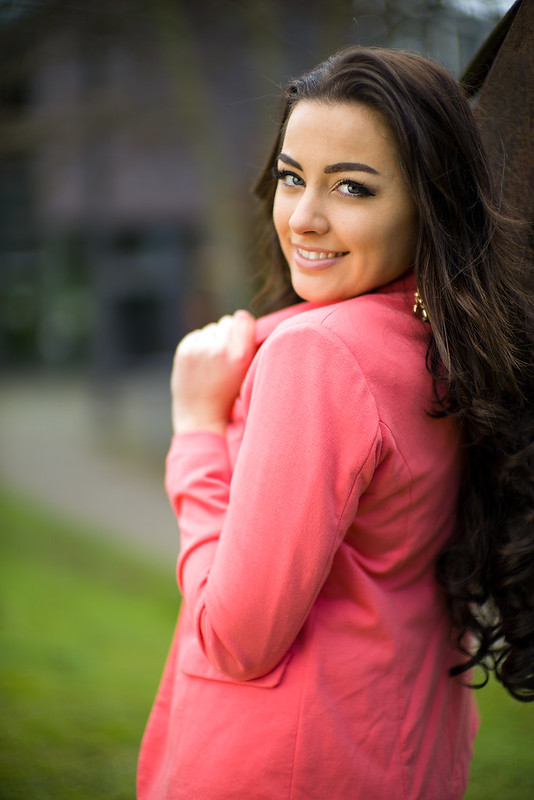
(click on image for other sizes including full resolution)
100% crop (actual pixels):

F1.4:

(click on image for other sizes including full resolution)
100% crop (actual pixels):
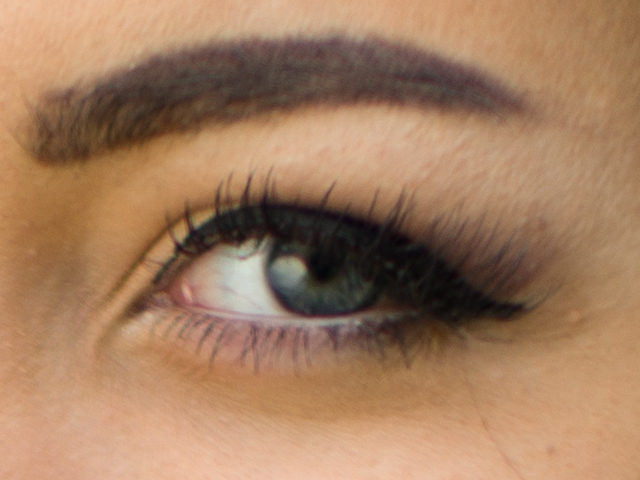
Next candidate is the SLR Magic HyperPrime CINE 50mm T0.95 @ open aperture (T0.95 / F0.92):

(click on image for other sizes including full resolution)
100% crop (actual pixels):
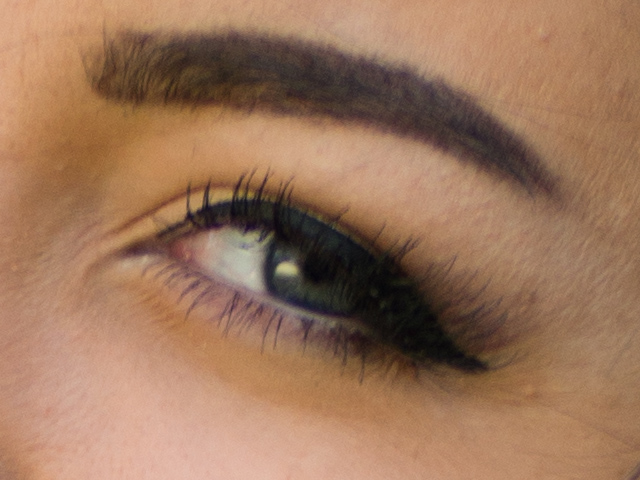
T1.5 (approx. F1.4):

(click on image for other sizes including full resolution)
100% crop (actual pixels):

Now we come to the Leica Summilux-M 50mm f/1.4 ASPH @ F1.4:

(click on image for other sizes including full resolution)
100% crop (actual pixels):
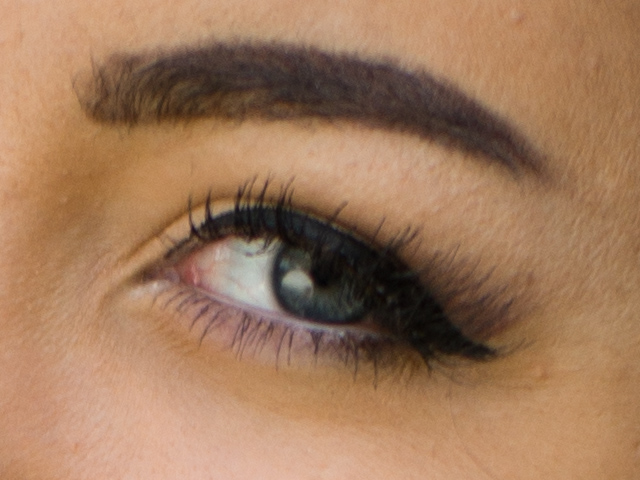
The native Zeiss FE Sonnar T* 55mm f/1.8 @ F1.8:

(click on image for other sizes including full resolution)
100% crop (actual pixels):
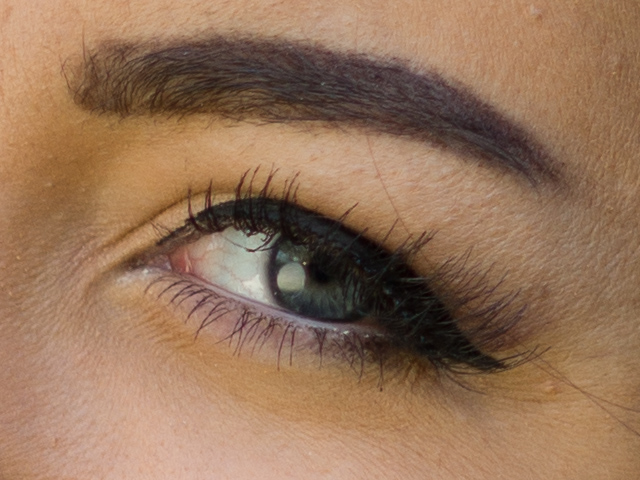
And finally the Zeiss Otus Apo Distagon T* 55mm f/1.4 @ F1.4:

(click on image for other sizes including full resolution)
100% crop (actual pixels):
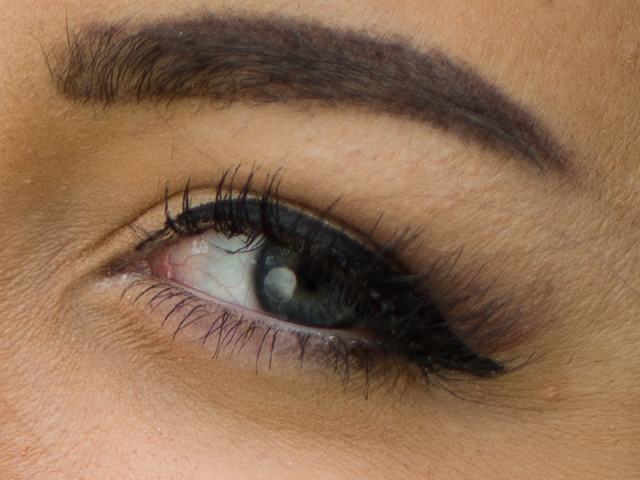
Another situation with different background. Distance was this time about 1.5 m (approx 5 ft.).
Leica Noctilux at F0.95:

(click on image for other sizes including full resolution)
100% crop (actual pixels):
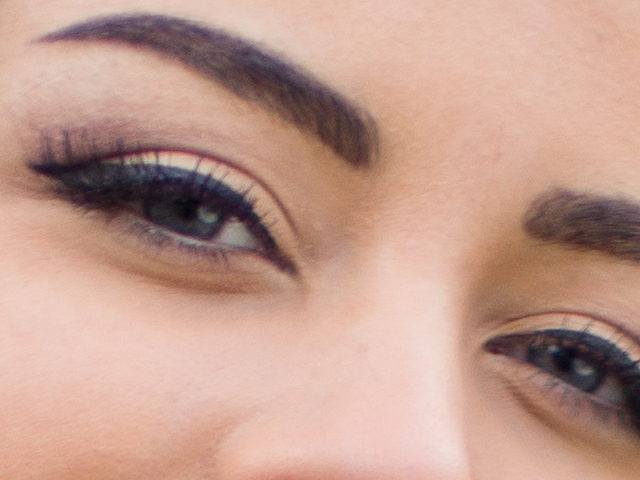
Leica Noctilux @ F1.4:

(click on image for other sizes including full resolution)
100% crop (actual pixels):

HyperPrime CINE 50mm T0.95 @ T0.95:

(click on image for other sizes including full resolution)
100% crop (actual pixels):
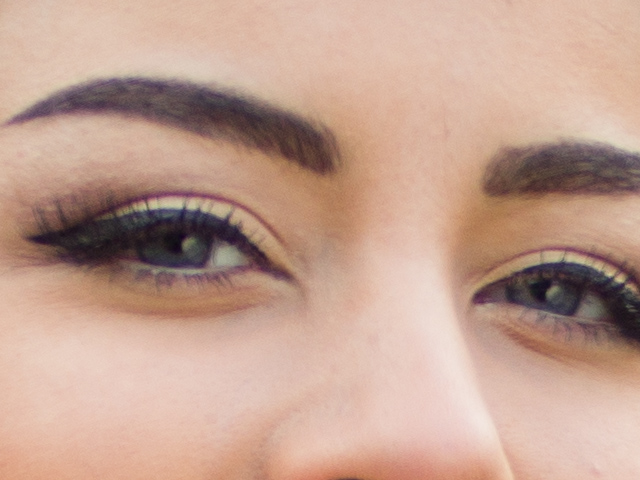
HyperPrime CINE 50mm T0.95 @ T1.5 / F1.4:

(click on image for other sizes including full resolution)
100% crop (actual pixels):

Leica Summilux @ F1.4:

(click on image for other sizes including full resolution)
100% crop (actual pixels):

Zeiss FE 1.8/55 @ F1.8:

(click on image for other sizes including full resolution)
100% crop (actual pixels):
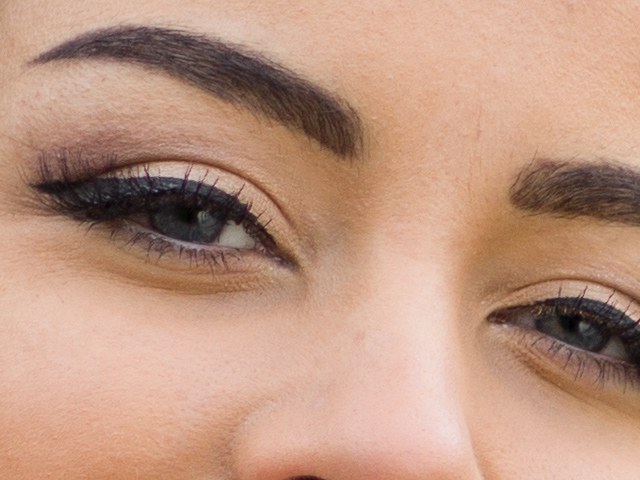
Zeiss Otus 1.4/55 @ F1.4:

(click on image for other sizes including full resolution)
100% crop (actual pixels):
